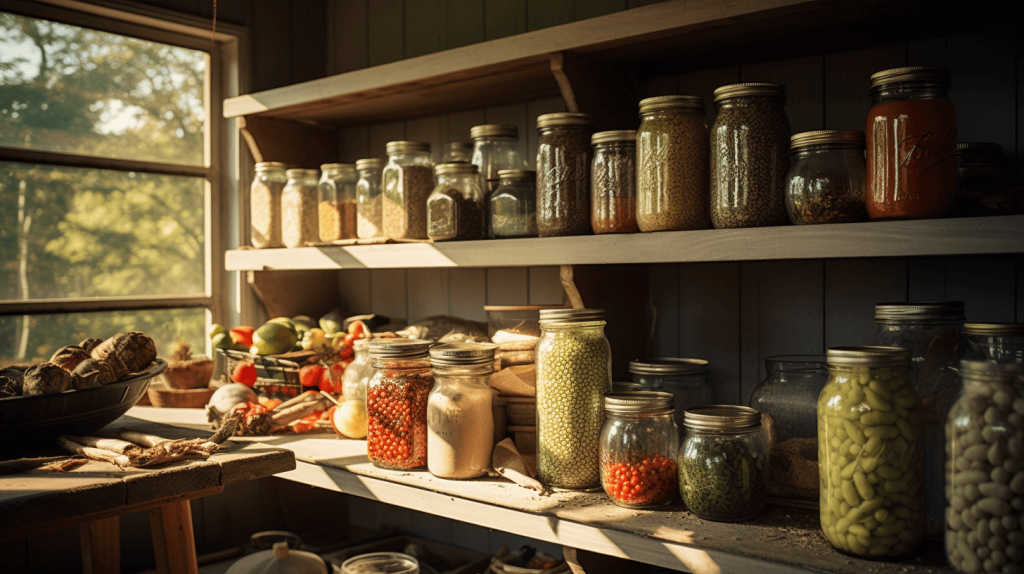With so many natural disasters happening around the world these days, it’s easy to see how being well prepared is becoming more and more crucial. However, being fully prepared doesn’t just mean having the necessary supplies; it also means stocking up on all the right foods for your survival pantry.
If you’re looking to build a well-stocked survival pantry, here are the top foods you’ll want to start your stockpile with.
Grains
Grains are the most common food staple in the world for a reason! Grains are easy to store and preserve for long periods of time due to their high carbohydrate and protein contents, which make them perfect to hoard in case of emergency. When packaged or stored properly, grains can literally last up to 20 years! Examples of grains that can be stored for many years include barley, oats, rye, wheat berries, corn, rice, and quinoa.
- Oats are a good source of fiber and complex carbs that provide energy for your body during an emergency. They can be eaten raw or boiled and added to soups or stews. They can be stored for at least five years in sealed bags or containers.
- Wheat berries take a long time to cook, but can last for a long time when properly stored. These grains can be added to soups or stews and served with beans or other vegetables. They can last for a minimum of six years if stored in air-tight containers or sealed bags in a cool, dry place.
- Barley is a type of grain that grows differently than other common grains. It comes from plants that grown from a thick stock and has long roots. These grains can be added to soups or stews and potatoes for a delicious and filling meal upon returning home from a survival situation. They can be kept for a minimum of five years when stored in airtight containers in a cool, dry place.
- Quinoa is a small seed that is grown from South America and is high in magnesium and iron. They can be used as a substitute for rice or couscous in recipes and can also be eaten immediately after being cooked. Quinoa can be eaten straight or ground into flour and can be added to soups or stews or served as a side dish to chicken or fish. They can be kept for a minimum of three years when stored in a cool, dark, and dry place.
Beans and Legumes
Dry beans and legumes form the base of a healthy survival diet because they are inexpensive, easy to eat and packed with nutrition. They also provide many vitamins and nutrients that our bodies need to survive such as iron and potassium. Beans and legumes can be eaten alone with nothing else added or they can be added to soups and stews, blended into dips or made into a variety of tasty dishes that the whole family can enjoy.
- Beans and other high-quality legumes, such as pinto beans and lentils, can provide a significant amount of protein, iron, and other micronutrients when eaten regularly as part of a healthy diet. They are also easy to grow and store for long periods of time, making them an excellent choice for emergency preparedness.
- Canned foods are a low-cost solution for long-term food storage. Canned vegetables are a healthy option and are easy to prepare without electricity or water, making them perfect for survival scenarios when electricity might be out and water might be unsafe to drink from open containers or questionable
Potato Flakes
Potato flakes are the fast food of survival foods.
You can cook them with water in minutes and all without electricity or a stove. They store well for long periods without refrigeration and are easy to prepare by simply adding water.
Their nutritional value makes them an incredible food source that can help keep your body healthy even in the most trying of times!
One serving of potato flakes contains over 600% of your recommended daily allowance of vitamin C and 10% of your recommended daily allowance of vitamin E. They also contain a significant amount of vitamin B6, potassium, and magnesium.
The best part is that they are incredibly versatile and can go with almost anything! You can add them to casseroles, soups, stews or even eat them with scrambled eggs for a filling breakfast!
Dehydrated and Freeze-Dried Vegetables
A variety of vegetables are ideal, but the best types of vegetables to have in case of emergency are those that are inexpensive, easy to store and easy to prepare.
Dehydrated and freeze-dried vegetables are easy to prepare by rehydrating them in water. Dried vegetables do not typically require refrigeration and can be stored for long periods of time in a sturdy airtight container. They can also be added to soups and other foods to increase their nutritional value and taste. Another great thing about freeze-dried and dehydrated vegetables is that they can often be found on deep discount at food swap events and other survival food sales!
While freeze-dried and dehydrated vegetables can be pricier than fresh, canned or frozen vegetables, they also offer a number of advantages over their conventional counterparts! For starters, freeze-dried and dehydrated vegetables are shelf-stable and don’t require refrigeration for an extended shelf life. This means they can be stored anywhere in your home and won’t spoil like fresh produce might! The packaging of freeze-dried and dehydrated vegetables is also both light and durable; this makes them easy to pack and carry for any hike.
White Sugar
Even though white sugar has no health benefits, it is highly desirable in emergency situations.
Many people believe that white sugar is not healthy for consumption, and that it should be substituted with honey or pure maple syrup. However, white sugar is actually a great ingredient to have in your survival pantry. White sugar can be used to preserve other vegetables in a survival situation. Some vegetables that can be stored and preserved using white sugar are carrots, cucumbers, and onions. This variety of vegetables can be used to make delicious dishes such as salads and sandwiches; they’re great for not only survival purposes but also for everyday consumption as well!
Final Thoughts
In an “end of the world” scenario, you may be one individual who finds yourself in a catastrophic situation (or you may have one entire family) that needs to rely solely on stored food for their survival. That’s why it’s so important to have an affordable supply of survival food that you and your family can rely on to get you through. Survival food is incredibly important for emergency situations, and while you may not need to survive on your own in a post-apocalyptic scenario, it’s always best to be prepared.


